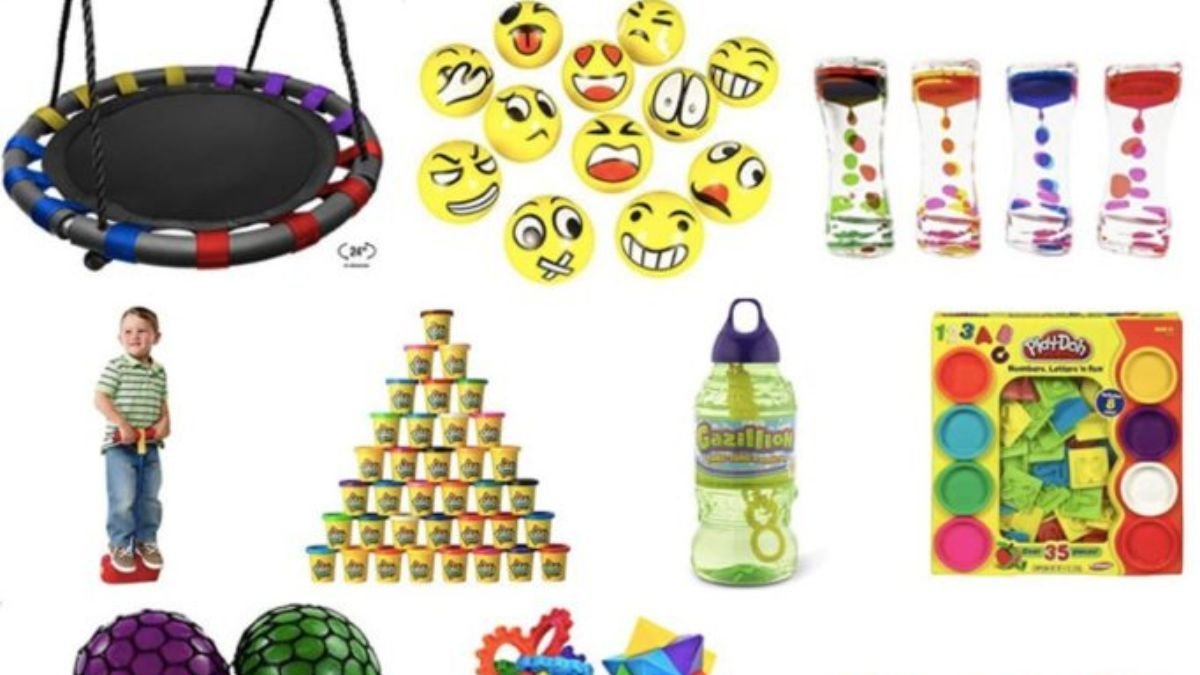The biggest challenge for a teacher is providing every child with an equal opportunity to learn. But when some children are over-responsive or under-responsive, traditional teaching techniques don’t always work. This is where sensory support strategies come in. These strategies balance children’s sensory experiences—visual, auditory, tactile, smell, and movement—to help them learn and concentrate better.
In today’s world, when every classroom contains children with diverse backgrounds and abilities, creating a sensory-friendly environment has become not just a part of special education but a mainstream necessity.
What is sensory processing?
Sensory processing is the process by which our brain receives, understands, and responds to information from the senses. When a child has difficulty with sensory processing, they either become overly excited or don’t respond at all. In such a situation, it is important for the teacher to understand that this behavior may not be stubbornness but a sign of sensory overload.
For example, some children are bothered by bright lights or noise. Others prefer constant movement because they need input related to body movement.
Classroom Environment: Creating a Calm and Balanced Space
First, sensory support begins with the classroom environment. Teachers should ensure that the lights are not too bright, there are no excessive posters on the walls, and desks are arranged so that children do not bump into each other.
Use natural light if possible and space tables and chairs so that children can move freely. Designate a corner as a “calm zone” where a child can sit and be quiet for a while. Soft pillows, weighted blankets, or sensory toys can be placed there.
- This small change helps many children learn self-control.
- Visual Support: Using Visual Aids
Visual aids teach children both direction and discipline. Teachers can put a daily timetable, task list, and expected behavior charts on the board. Color-coded notebooks or labels also help children gain a sense of organization.
Some children simply don’t pay attention to verbal instructions, so visual cues are helpful. Such as a hand signal for “be quiet,” a special card for “sit down,” or a color-changing light signal for “start work.”
Auditory Support: Keeping Sound Moderated
Classroom noise levels greatly influence children’s behavior. Constant conversation, the sound of scraping benches, or loud fans can increase irritability. Teachers can use “soft sound signals” such as bells, gongs, or soft music to signal to children that it’s time to pay attention.
Soft music or white noise machines also help some children focus. If a child is highly sensitive to sound, noise-canceling headphones or earplugs can be provided.
Tactile Support: Touch-Based Strategies
Many children prefer to learn through touch. For these children, teachers can encourage tactile learning in the classroom—such as creating letters with sand, drawing shapes with paint, or playing with cards with different textures.
Some children need tactile input to calm themselves. In this case, they can be given sensory brushing or fidget tools like stress balls, fidget cubes, or velvet strips. These items help children maintain self-control without being disruptive.
Proprioceptive Activities: Assistance with Body Movement
Proprioceptive input is what gives us a sense of body position. Children receive this input when they move, lift heavy objects, or stretch.
Teachers can incorporate “movement breaks” or “heavy work” activities into the curriculum, such as carrying books to a shelf, arranging chairs, or doing push-ups against a wall.
These small activities channel children’s energy in a positive direction and help them focus rather than distract.
Olfactory and Gustatory Support: The Influence of Smell and Taste
Some children are highly affected by specific smells or flavors. Therefore, strong perfumes, food odors, or smoke should be avoided in the classroom. If the teacher is creating a “sensory corner,” a mild scent like lavender or peppermint can be used there, which promotes calmness and concentration.
Sometimes, children calm down by chewing or tasting, so chewing tubes or safe snacks (such as dried fruit) can help control them.
Organization and Routine: Predictability Creates a Sense of Security
Children with sensory challenges often become unsettled when routines change. Therefore, teachers should keep routines as consistent as possible. Explaining what is going to happen at the beginning of the day creates a sense of security in children.
Additionally, clear signs should be provided for transition times such as “class change,” “break time,” or “homework assignment.” This prevents children from being overwhelmed by unexpected changes.
Conclusion
Sensory support isn’t just for children with special needs—it enriches the learning experience for every child. When teachers create an environment where children feel comfortable, safe, and focused, they not only learn better but also become more confident.
